Diversity and Equity
Place-Based Education and Community Knowledge Connect Youth to Water Topics
Connected Science Learning July–August 2023 (Volume 5, Issue 4)
By Brigitta Rongstad Strong, Anne U. Gold, Claire Ratcliffe Adams, Victoria Tomas, and Angela Watkins
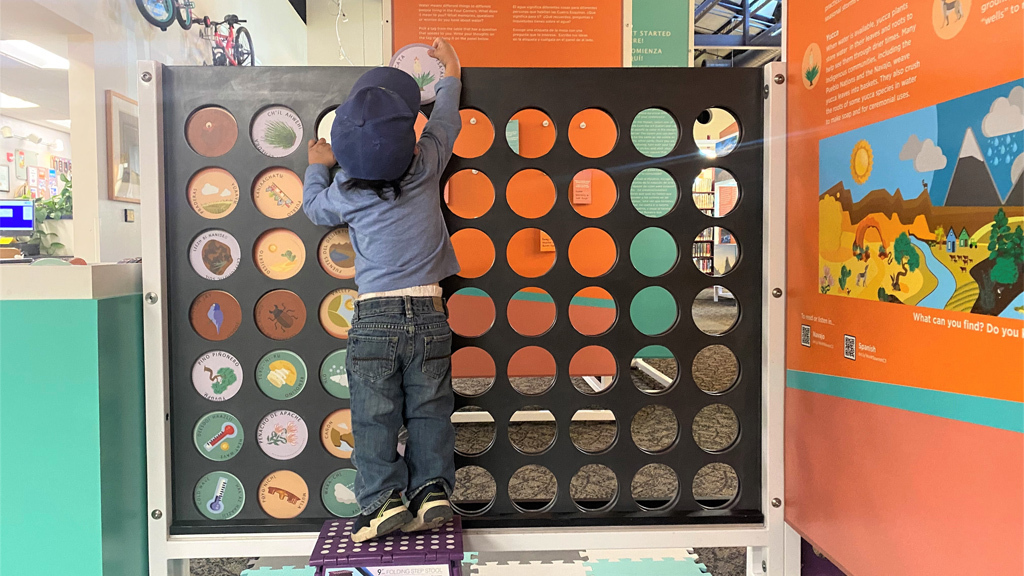
Water is critical and scarce in the desert southwestern United States, impacting all aspects of life—from individuals and communities to entire watersheds and ecosystems. Access to water varies across the region, where some communities truck every gallon of water to their homes, while others use water to irrigate their lawns. A We are Water storyteller from New Mexico emphasizes that “just because water comes in abundance from the faucet doesn’t mean it’s abundant.”
People and communities in the region with diverse cultural, economic, and historic perspectives and worldviews are connected by water. The current and long-lived megadrought (Park Williams et al. 2022) is at the forefront of many people’s minds, elevating the interest in discussions and learning about water and the complexities of water stewardship across geographic, political, and cultural boundaries.
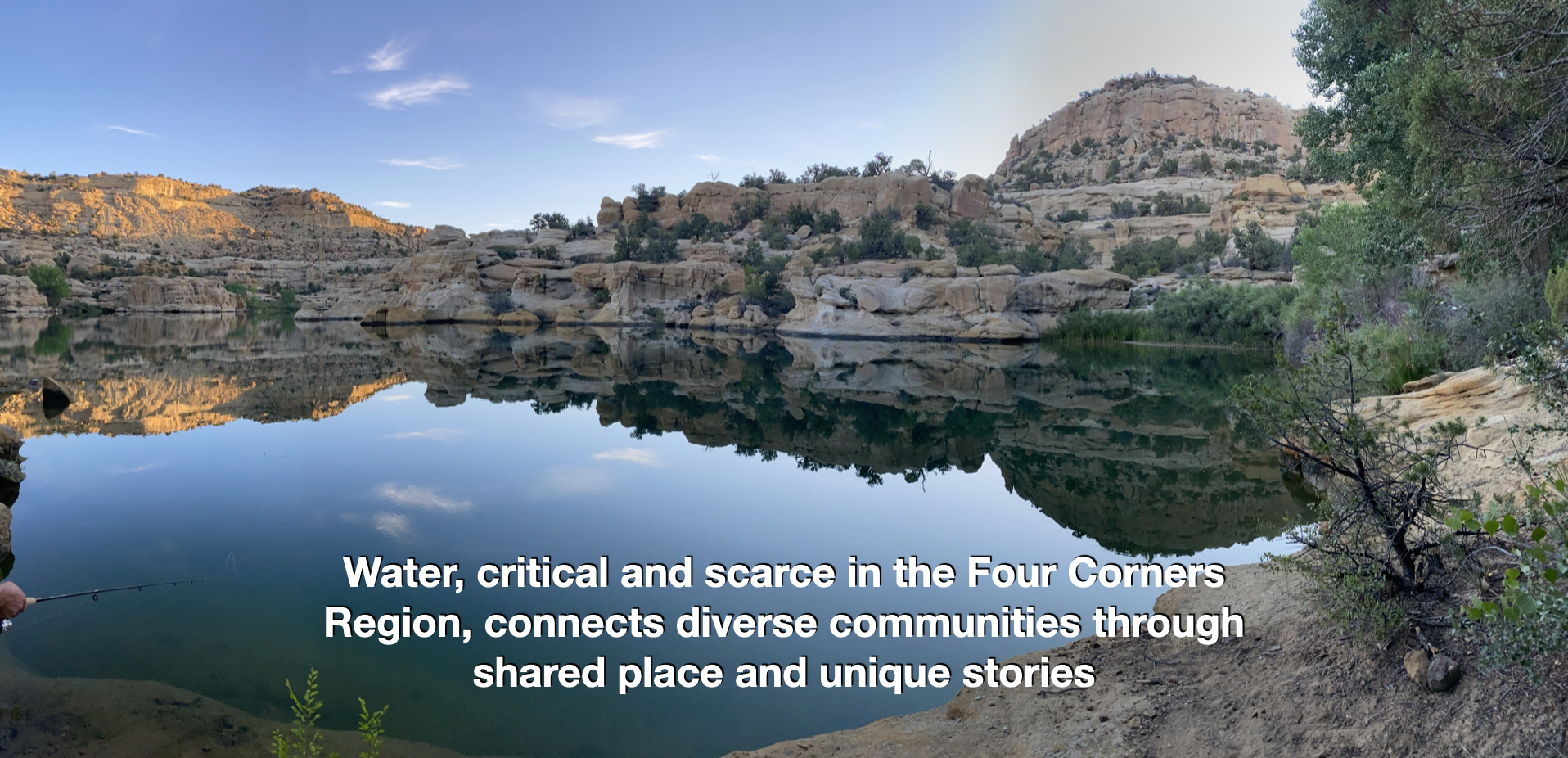
Learners engage and build deeper connections with science topics—like water—when local community perspectives, the local environment and ecosystems, and cultural connections are represented in an educational experience. This approach to connecting learners with locally relevant topics is a key component of place-based education (PBE) (e.g., Sobel 2004, Semken et al. 2017). PBE programs that incorporate culturally diverse voices and perspectives help honor multiple ways of knowing, enabling a diversity of learners to access science and science education experiences through different cultural lenses.
A powerful way to ensure program activities are inclusive and culturally responsive is to include community voices in the design and implementation of PBE programs. Working with community members to identify topics and approaches to learning—for example, through discussions, needs assessments, or co-production—allows community voices and multiple ways of knowing to be intentionally and respectfully incorporated into an education experience.
There are different ways that people and communities can engage with science topics. Western science uses observations, predictions, and classifications or the “scientific method” to explore natural phenomena. Indigenous and traditional ecological knowledge (ITEK) enables learners to explore natural phenomena through observations, oral histories, and stories that reflect thousands of years of collective knowledge and experiences and honor spirituality and emotion (Mazzocchi 2006).
In PBE programs, storytelling can serve as a connector between people with different backgrounds and different ways of knowing about the world, including through Western science and Indigenous knowledge lenses. Storytelling can elevate the diversity of knowledge that exists in communities, foster engaged interactions, and inspire conversations and community building.
Rural Libraries Connect Diverse Communities to Learning Experiences
Public libraries are more than a place to check out books—they are community learning spaces where people of all ages and backgrounds can access learning opportunities, public programming, job services, and a safe place to rest (American Library Association 2015). Libraries also often serve as the bridge between schools and communities, for example, when kids participate in after-school activities or summer programs when caregivers are looking for extra activities or learning opportunities or during multi-generational programming at the library.
Over the last several decades, libraries have been expanding their programs to include science, technology, engineering, and math (STEM) learning experiences for visitors of all ages to support science literacy in their communities (Baek 2013). As places that offer all of these services at no cost to participants, public libraries have become an integral part of the learning ecosystems of families who might not otherwise have access to STEM learning outside of school time.
The We are Water Project
In the southwestern United States, the We are Water program creates a place for people to connect and share stories about local water topics, and to explore and learn about water together. The project brings a traveling exhibit and interactive education programs about regional and local water topics to libraries in rural, Indigenous, and Latinx communities. Local schools and informal education groups like Girl Scouts, Boy Scouts, 4H, and local youth groups are invited to align their programming with the exhibit and organize events around water topics while the exhibit is hosted in their community.
Local community voices serve as the foundations for the We are Water exhibition, through the design process and in the implementation of local programming. At the start of the project, short community interviews informed the exhibit and program design. Prompts used to gather community feedback were, for example,
- What water topics are of concern in your region?
- Who would you be interested in hearing from their perspective about water?
- What does water mean to you and your community?
- What would you want people to know about water in your community?
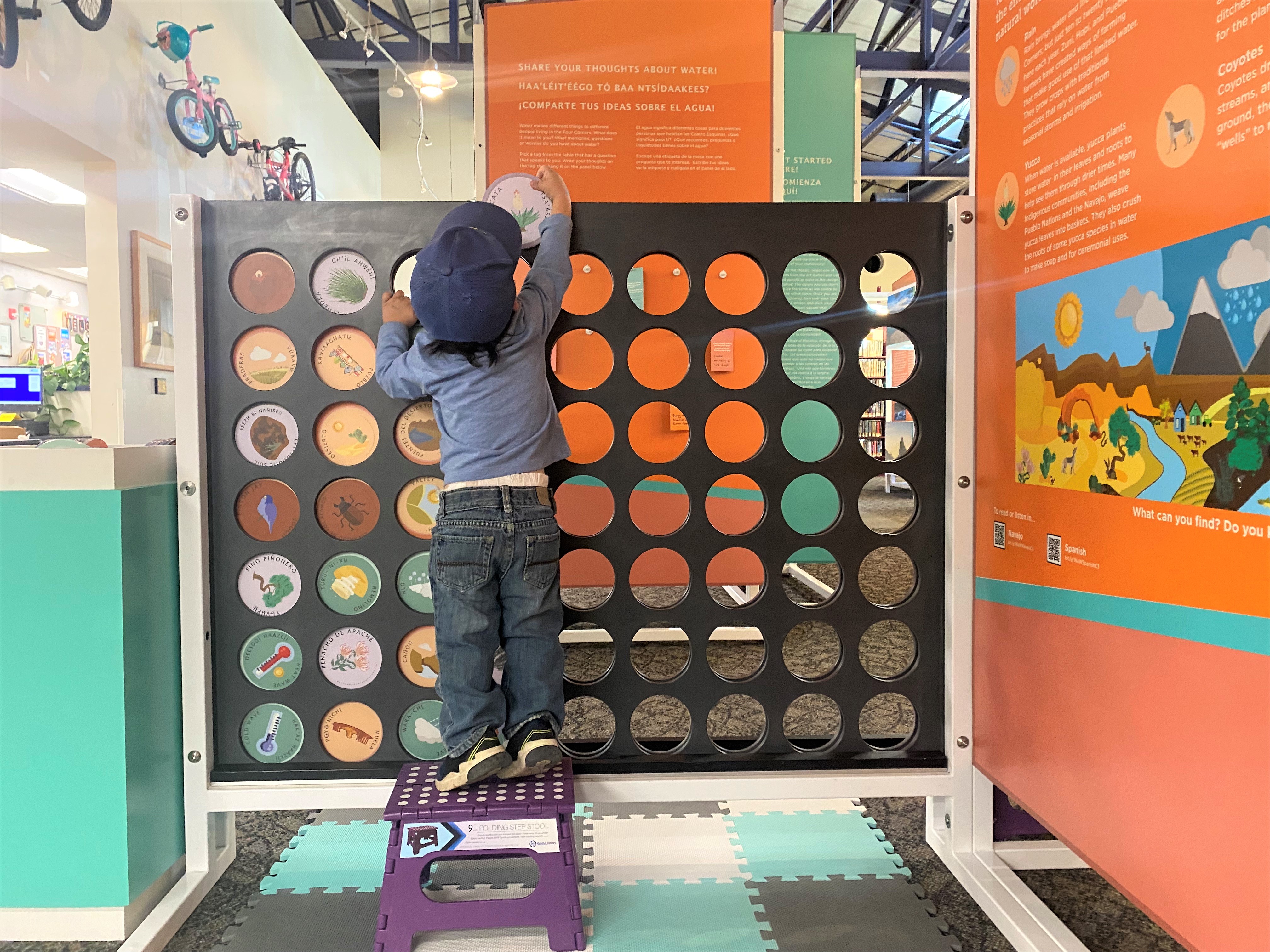
These questions inspired responses that the We are Water team grouped into four main themes:
- water use and water rights (e.g., Indigenous water rights and Prior Appropriation),
- water and life (e.g., water quality and pollution),
- water in the landscape (e.g., geology and landforms), and
- water in our communities (e.g., cultural connections to water).
These themes and topics inspired the development of four exhibit pieces, including interactive components and related programming.
To further elevate community knowledge in the We are Water exhibition, the team also recorded local water stories with community members from each host site. These stories are shared in the “story wall” component in the exhibit and online, through the program website, and on social media.
The interview themes and insight from some of the local stories guided the development of We are Water take-and-make activity kits, including the Be a Water Detective kit, the Waffle Gardens kit, and the Be a Water Historian kit, which we highlight below. To honor multiple ways of knowing about water in the programming, different learning approaches were used for each kit, including Western science, ITEK, and storytelling.
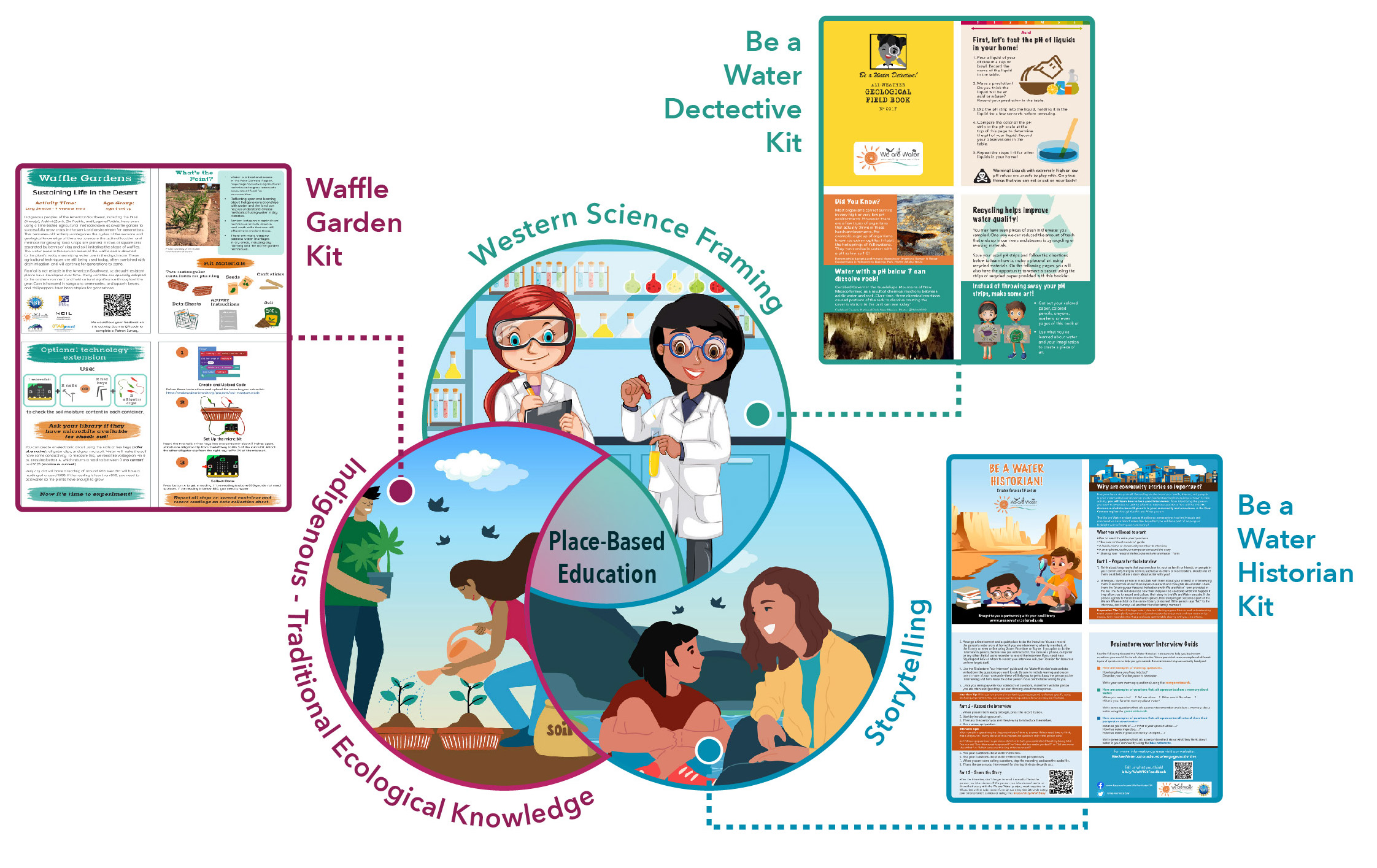
The Be a Water Detective Kit
In the desert Southwest, water quality is heavily impacted by human activities, including historical mining operations that have left harmful chemicals in the environment. Recent environmental disasters, such as the 2015 Gold King Mine Spill that impacted communities in Colorado and New Mexico, have fueled local concerns about water quality in the region. These concerns are compounded further by the complexities of limited water availability and issues related to water access and distribution due to the impacts of the megadrought. The We are Water team responded to the interest that community members expressed in learning more about water quality by developing a hands-on activity booklet that explores how observations can be used to tell a story about water health.
Through this Be a Water Detective take-and-make activity kit, kids (ages 8–13) take on the role of a water scientist and learn about water quality through Western science–focused sampling and observation activities. The kit, which is translated into English and Spanish, includes two water quality sampling activities that introduce the concept of pH through the sampling of household substances and a local water source. The sampling activities encourage learners to think about what their observations mean and how they can use their observations to tell a story about water in their household or community. The kit also includes two recycled art projects, including an activity that re-uses pH strips and a basket weaving activity that highlights and honors Pueblo basket-making traditions, which connect to water collection and transport. The recycled art activities help learners see how they can reuse unconventional items, such as trash or used paper, to create something beautiful and help keep local waterways clean.
A library partner in New Mexico reported that kids and families enjoyed the Be a Water Detective kit: “They thought the kits were perfect. They felt it gave them family bonding time and the kids loved the STEM effects of the kits.” The library partner also emphasized her own excitement about the kit. “[I liked] the discovery aspect. It allowed the kids to continue learning and… to share new knowledge with their friends.”
The Waffle Gardens Kit
Waffle gardening is a traditional Indigenous method of farming in the southwestern United States that is adapted to the water scarcity of the region and has been used by Indigenous peoples for centuries, including the Diné (Navajo), A:shiwi (Zuni), Zia Pueblo, and Laguna Pueblo. Waffle gardens are structured in a way that crops are surrounded by mounds of soil, often in a square shape resembling waffles, which makes efficient use of water by pooling in the sunken area directed towards the plant’s roots. The We are Water project team developed a Waffle Garden take-home kit with the guidance and ancestral knowledge of a member of the Laguna Pueblo in New Mexico.
Waffle gardening is a “living” agricultural technique, meaning that it is still being used. The technique uses deep knowledge of the geological and hydrological aspects of the land and requires careful observation of how water flows and seeps into the ground. Waffle gardens are closely tied to the seasons, and since rainfall isn’t reliable in the region, drought-resistant plants have evolved over time. Seed sharing is a common practice to perpetuate crop varieties well suited to the climate and maintain those of cultural significance.
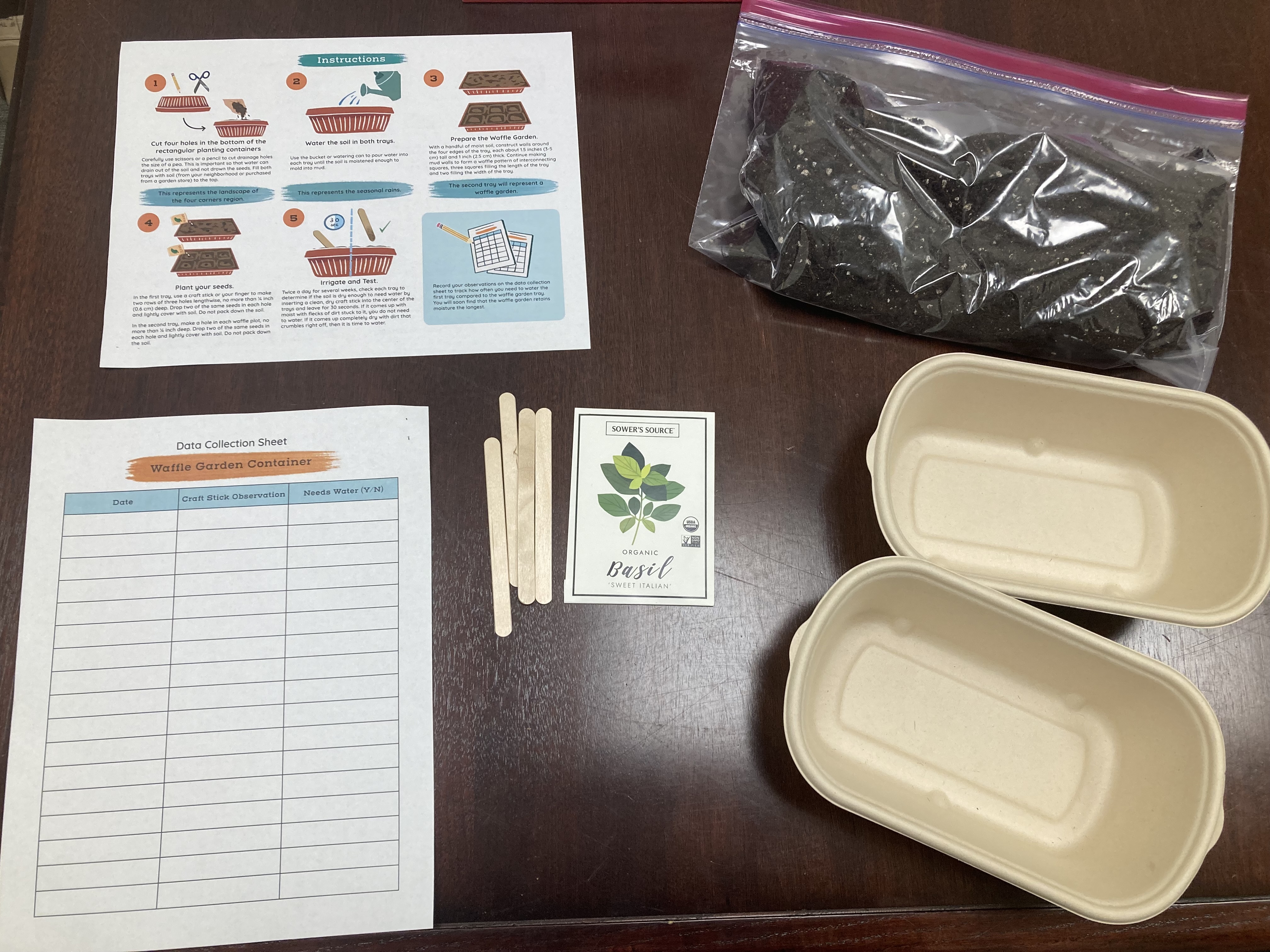
The Waffle Garden Kit provides library visitors (ages 8 and up) with materials to build their own mini waffle garden at home and compare the soil moisture content with that of a standard garden. We have further developed an optional tech extension that involves coding micro:bits to collect soil moisture data to visualize the water-retaining properties of the waffle garden and illustrate the effectiveness of this technique. Micro:bits can be checked out by patrons from the libraries to explore the concepts of water conservation, programming skills, and conductivity. Third-grade and high school students from public schools in Arizona provided feedback on the kits, demonstrating ways the activity can be adapted for a wide range of ages. Library staff at a pilot site also provided input to make the activity accessible as a Take & Make activity kit.
The Be a Water Historian Kit
The We are Water exhibition enables visitors to listen to local stories and learn about water from people in their community and from other locations in the region. To allow library visitors to share and record stories about water from their community, the We are Water team developed an activity booklet, adapting guidelines and practices outlined by the Oral History Association in Oral History Projects in Your Classroom (Wood 2001).
Through the Be a Water Historian kit, tweens, teens, and adults (ages 13 and up) learn how to lead an interview and record a story about water from someone in their community. The kit, which is translated into English, Navajo, and Spanish, contains prompts and notecards that help learners organize their thoughts and develop meaningful interview questions. The kit allows participants to learn about water directly from and build relationships with people in their communities and broaden their understanding of water. Learners are also able to share the recordings with the We are Water project, for the chance to be featured in the exhibit and online gallery of stories and reflections.
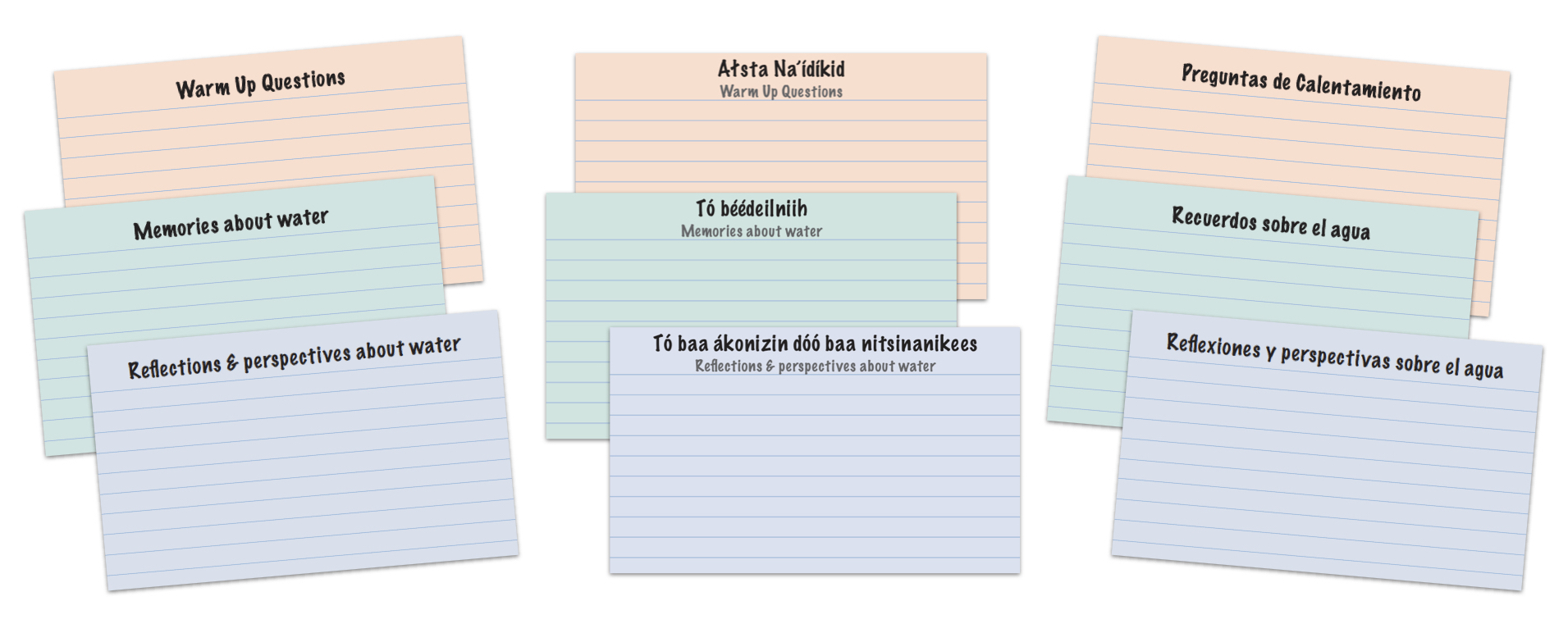
The Be a Water Historian kit correlated well with material fourth- and fifth-grade Diné students from Puente de Hozho (Flagstaff, Arizona) were learning in a unit called Tó Iina (Water is Life). The community of young learners used the kit to guide them through interviews to learn about water from family and community members, and their teacher helped them share their recordings with the We are Water project.
After finishing the interviews, students shared their reflections about the We are Water Historian kit. Students said, for example:
- “The water interview helped me understand how many times that people on the reservation had to haul water—the water stories are important because it is a memory.”
- “I felt proud because my voice was on the short [exhibit] video.”
- “I learned that there was more water back then.”
- “I learned that without tó [water], there would be no life.”
The students were extremely interested in collecting information about water in their communities, and they were eager to share their family water stories. The teacher who participated said the experience was meaningful, as it brought attention to the importance of water conservation, community issues, and the significance of how water has changed over time. Many of the student interviews were with community elders and brought insight into intergenerational water stories. The teacher reported that for the Diné students, it meant a lot to them to see that the activity kits, coloring pages, and information about water were in the Diné language, and they were excited to be a part of the online gallery of stories. A compilation video of the interviews are displayed on the exhibit and can be found on the We are Water web page.
Conclusion
Western science supports our understanding of natural phenomena, like water scarcity and ways that water travels through the environment, but it is not the only way that people understand or learn about the world around them. To honor multiple ways of knowing, PBE programming in the We are Water project elevates community knowledge through activities about traditional practices and storytelling.
We are Water’s collection of take-and-make activity kits demonstrates how programs can inspire engagement with societally relevant science topics such as water by successfully combining different learning approaches and ways of knowing into a PBE program. Our library partners across the southwestern United States emphasized kids and their families were excited to learn about water in their local community through playful interaction with the topic, and that the kits provided a unique opportunity for them to learn about water in different ways.
Acknowledgment
We are Water springs from a collaboration between libraries, scientists, Indigenous scholars, educators, and researchers, with partners from CIRES, Indigenous Education Institute, Western Water Assessment, CoCoRaHS, Space Science Institute, Native Pathways, and Reimagine Research Group. We thank library staff from High Plains Library District, Aztec Public Library, Navajo Nation Library and Museum, Pine River Library, Montrose Regional Library, Zuni Tribal Archives, Ignacio Community Library, and Page Public Library for their partnership and support. This program work was supported by the National Science Foundation under the awards DRL-1907024 and DRL-1906951 and in part by the NOAA cooperative agreement NA22OAR4320151.
Land Acknowledgment
We honor and acknowledge that the We are Water program takes place in the traditional territories and ancestral homelands of the Navajo, Jicarilla Apache, Hopi, Zuni, Ute Mountain Ute, Southern Ute, and Pueblo Nations. Their relationship with the land we call the Four Corners continues to this day. The region is also home to descendants of Hispanic and European Americans who first arrived here starting in the 1500s.
Brigitta Rongstad Strong is an associate scientist and the program manager for We are Water at the Cooperative Institute for Research in Environmental Sciences, University of Colorado Boulder. Anne U. Gold is the director of CIRES Education & Outreach at the Cooperative Institute for Research in Environmental Sciences, University of Colorado Boulder. Claire Ratcliffe Adams is an education associate at the Space Science Institute in Boulder, Colorado. Victoria Tomas is a fourth- and fifth-grade teacher at Flagstaff Unified School District in Flagstaff, Arizona. Angela Watkins is the library director at Aztec Public Library in Aztec, New Mexico.
Environmental Science Inclusion Multicultural STEM Informal Education


